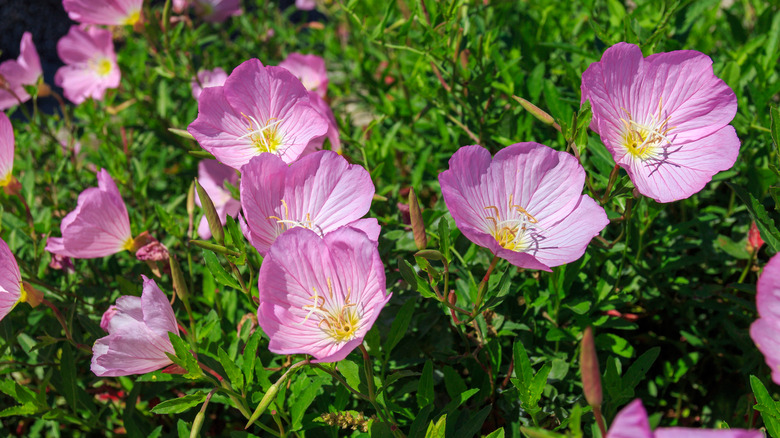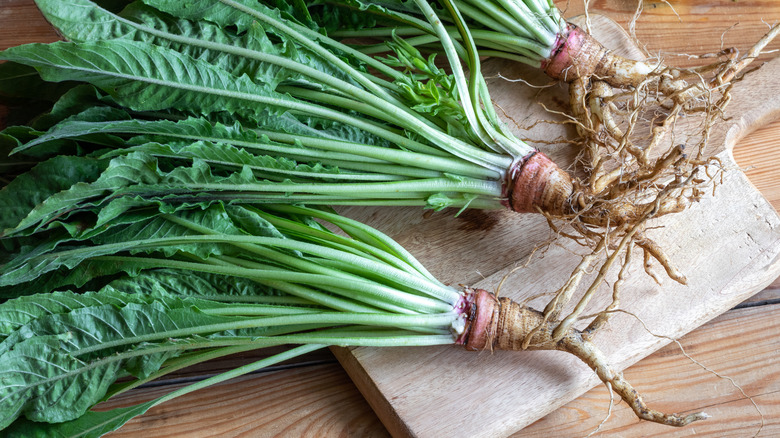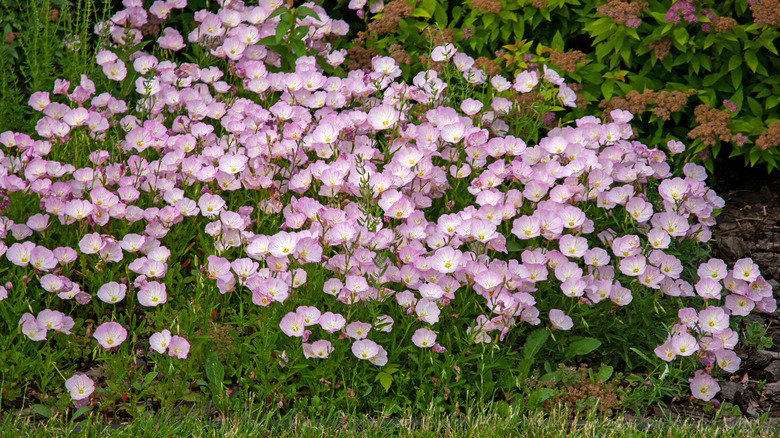Why You Should Think Twice Before Planting Pink Evening Primrose
Pink evening primrose is a wildflower native to the southeastern U.S. with its pink blooms spreading out during the spring along roadsides, river banks, and across fields. The delicate nature of these small pink flowers is deceiving, and unless you're content to enjoy them alone, thinking these are pretty wildflowers that can grow in your garden would be a mistake: they spread prolifically, and will quickly and aggressively take over your garden, driving out any other plants you may have.
They are so persistent and good at spreading that you may even find them unexpectedly popping up in your garden, despite the fact that you didn't plant any yourself. This is because each flower has the capacity to drop many seeds after blooming, and while you may think that your garden is safe as the plant dies back during the winter, what you can't see are the roots spreading out in all directions underground. In the following spring, an army of pink flowers will begin to pop up in all corners of your garden, overpowering your other plants and successfully competing for nutrients and space.
How to stop pink evening primrose from devouring your garden
It's very difficult to keep invasive plants from spreading, and pink evening primrose is notoriously difficult to banish from your garden once it has spread out its roots. You may not be able to use herbicide without affecting the plants you want to keep in your garden, too. In order to eradicate regrowth, you must be extremely thorough in pulling up all of the stems and roots.
This can end up being a pretty destructive task if the invasive plant roots have already spread far and wide underground over the winter, which is very likely as you will probably not know about the problem until the pink flowers begin to emerge in the spring, by which time it is too late. If you are attempting to remove all traces of this plant from your garden, remember that even a small part of a root left behind can lead to another patch of primroses to deal with the following growing season. You may well have a drawn-out battle on your hands if you're not willing to start your whole garden over from scratch.
How to grow pink evening primrose in your garden
Pink evening primrose can be a great way to attract pollinators into your garden because the plant produces linalool, which is a compound similar to bergamot. When the blooms open, the citrus scent calls in all kinds of pollinators, from bees and butterflies to hummingbirds. Other types of evening primrose open their flowers at dusk, attracting nighttime pollinators, like bats, sphinx moths, and hawkmoths.
If you want to have pink evening primrose in your garden but don't want it to take over, just make sure to keep an eye on where it is growing and keep it under control by pulling up any unwanted flowers by the roots, so that they don't spread and affect the growth of your other plants. Avoid planting them in fertile soil, as this will also encourage overgrowth, and your garden will quickly become weedy. You can try growing them in deep containers, but they may still end up spreading out in your garden if they go to seed. You can avoid this by deadheading and pruning the flowers back after blooming to stop them self-seeding. Make sure you throw the heads of the flowers out in the trash — don't just throw them on the ground or in your compost heap, because they will continue to grow there.


